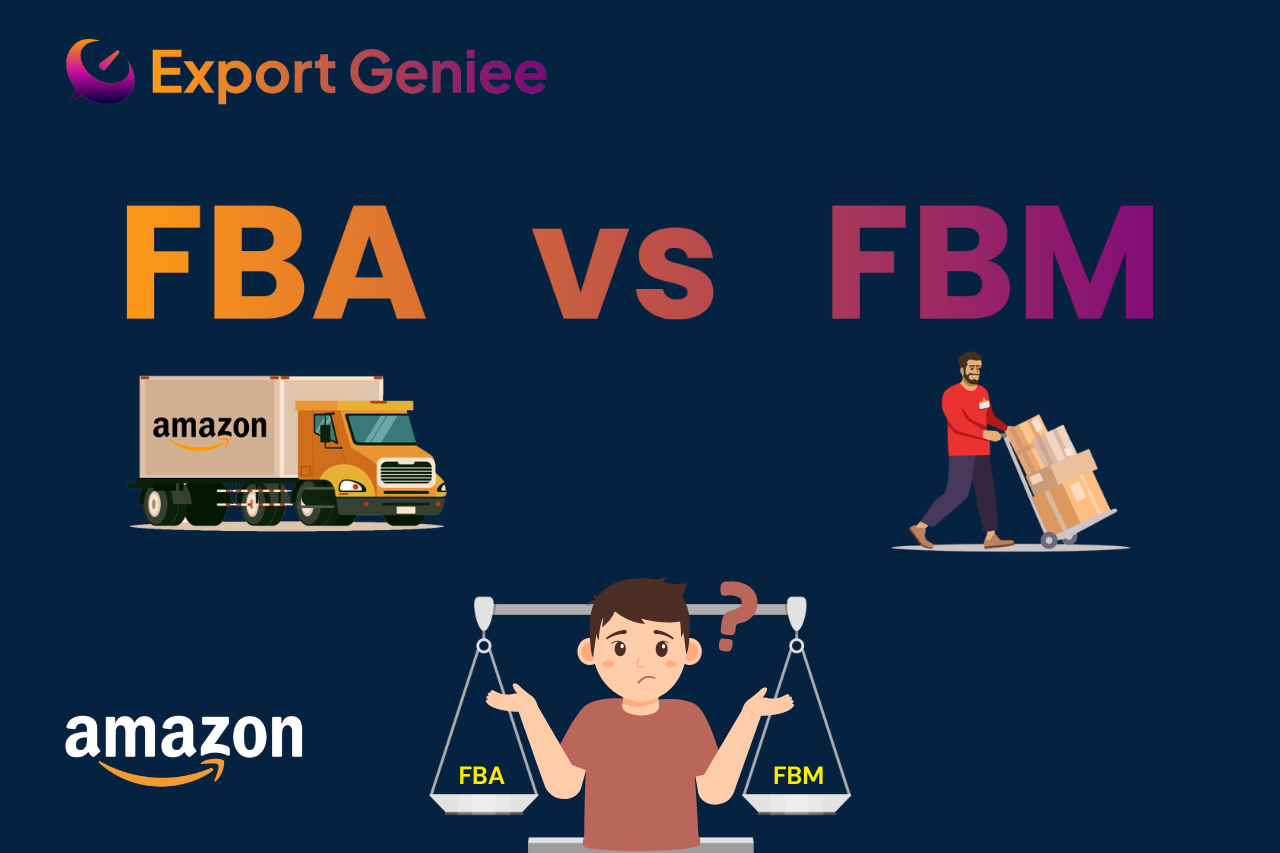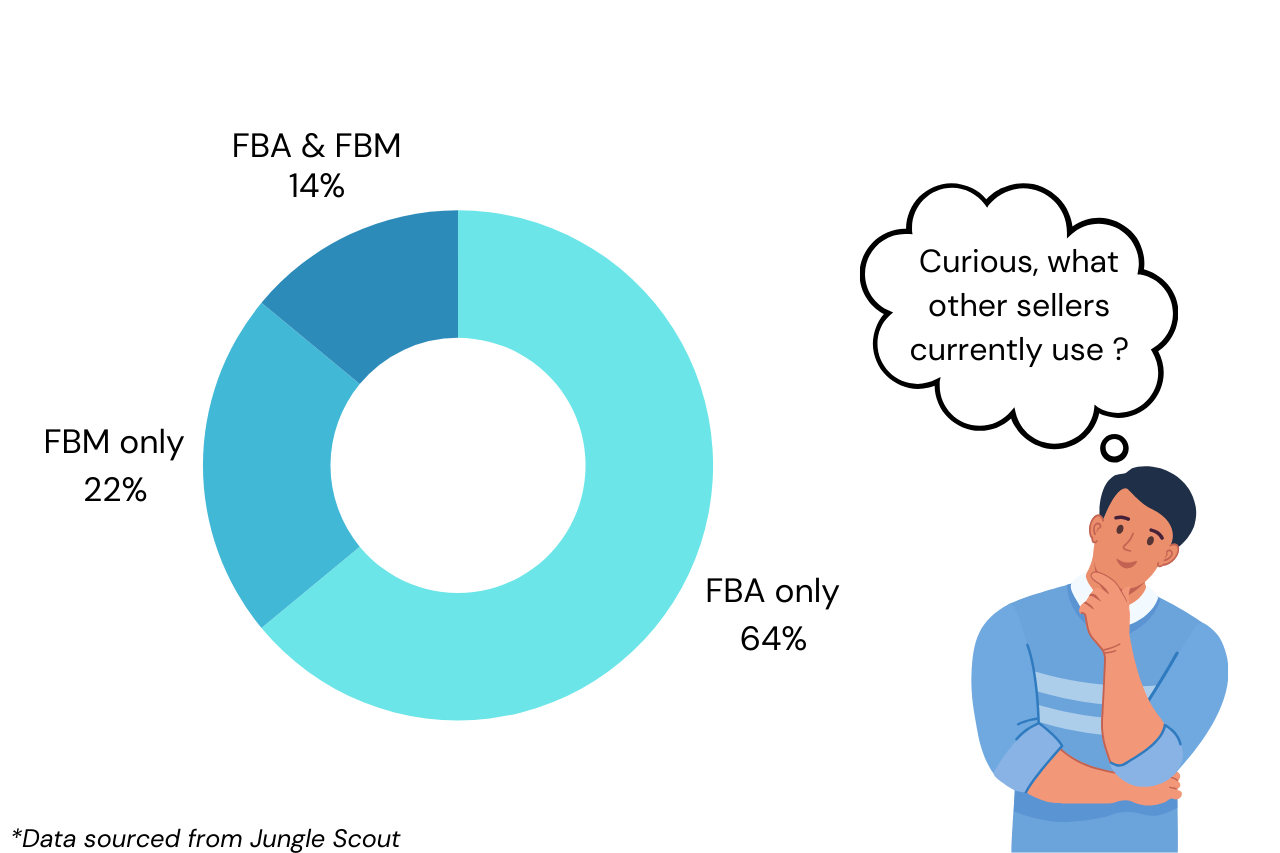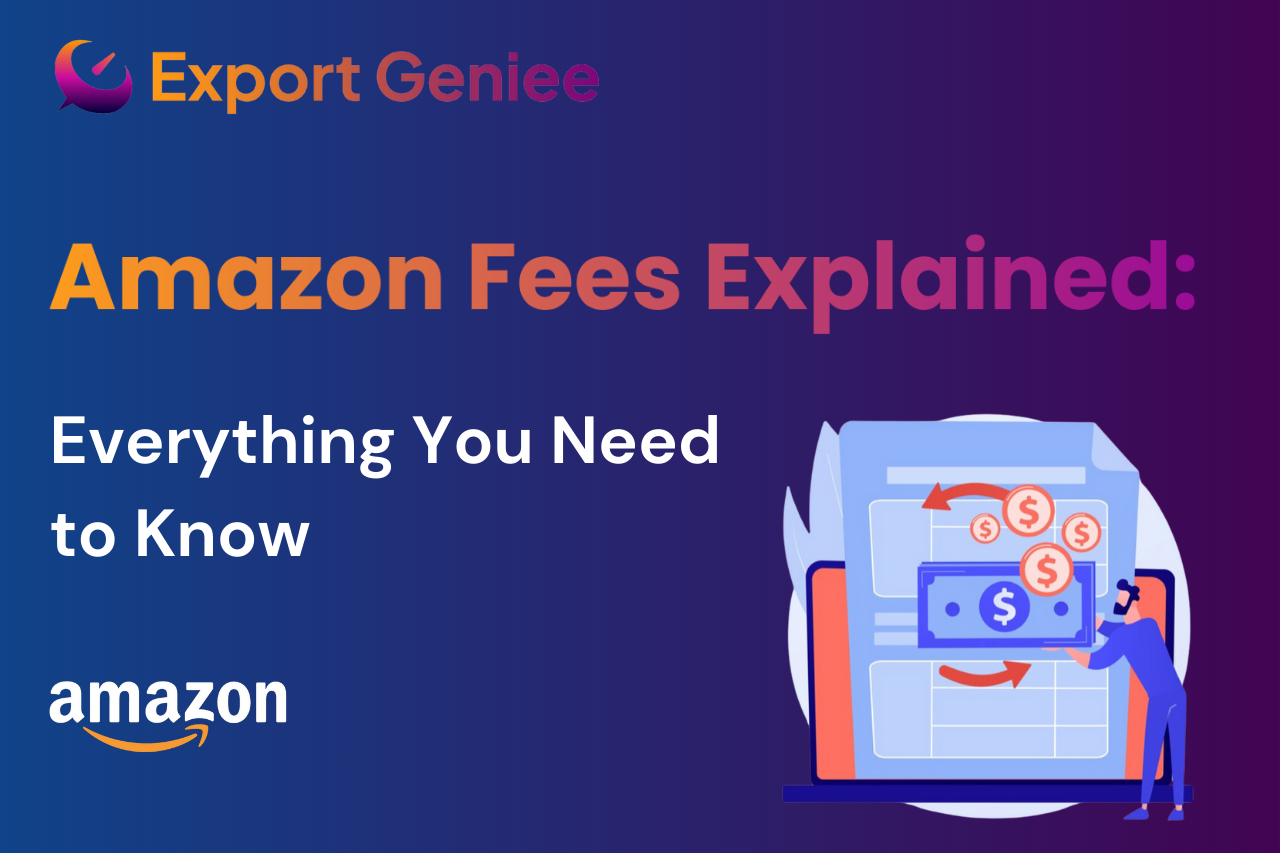FBA vs FBM: All-In-One Guide to Boost Your Amazon Sales

Table of Contents
Deciding how to fulfill your Amazon orders is a game-changing decision for every seller. After all, it's not just about listing products; it's about how you get them into your customers’ hands. Enter FBA and FBM, two popular methods that can shape the future of your Amazon business.
But wait—what exactly are these methods?
- FBA (Fulfillment by Amazon): You send your products to Amazon's warehouses, and they handle everything from storage to shipping and customer service. It’s like putting your business on autopilot.
- FBM (Fulfillment by Merchant): You, the seller, are the boss. You store, ship, and manage customer service yourself. It's more hands-on but can offer greater control and cost savings.
In short, FBA is perfect if you want Amazon to do the heavy lifting, while FBM is ideal if you like keeping things under your own roof. Now, let’s explore which one is better suited for your Amazon business—and more importantly, which can help you boost your sales!
Understanding the Basics
Picking between FBA and FBM isn’t just a logistical choice—it’s a strategy that can define how your business runs. Both options have their upsides, but they cater to different needs. Let’s make it simple.
-
What is FBA (Fulfillment by Amazon)?
With FBA, Amazon steps in to handle everything. You send your products to their warehouses, and they take care of the rest—storage, packing, shipping, and even returns. It’s perfect if you want to offload the heavy lifting and focus on other parts of your business. Less hassle for you, more convenience for your customers.
-
What is FBM (Fulfillment by Merchant)?
In FBM, you’re in charge. You store your own inventory, pack and ship your own products, and deal directly with customers. It’s a more hands-on approach, giving you full control over the process. For those who prefer a bit more flexibility and don’t mind getting involved in the day-to-day, this is the way to go.
Now that we’ve laid out the basics, let’s dive into the details of each method and see which is the best fit for your Amazon business.
Pros and Cons of FBA
-
Why FBA Can Work for You
-
Prime Power
By using FBA, your products get access to Amazon's massive Prime customer base, who are known for spending more and buying more often. It’s a sales booster in a big way. -
Buy Box Boost
FBA gives you an edge in winning the Buy Box, which is crucial since most customers purchase from the sellers who hold this spot. -
Let Amazon Do the Heavy Lifting
With Amazon handling everything from storage to shipping, you’re free to focus on growing your business while they manage the logistics. -
Higher Search Ranking
FBA listings often enjoy better visibility in Amazon’s search results, putting your products in front of more potential buyers.
-
-
Where FBA Might Fall Short
-
Fees, Fees, Fees
From storage to shipping, the costs can pile up—especially if you’re dealing with bulky or slow-moving products. -
Less Control
Once your products are in Amazon’s hands, you lose some control over how they’re stored, packed, and shipped. -
Strict Inventory Rules
Products that linger in storage can rack up extra fees, making efficient inventory management essential. -
Limited Customer Interaction
Amazon handles customer service, which means less direct contact with your buyers—a challenge if building relationships is key to your strategy.
-
-
Final Thought
FBA is ideal for sellers looking to scale and simplify logistics but comes at a cost. Consider whether the trade-offs work for your business goals.
Pros and Cons of FBM
-
Why FBM Might Be the Right Fit
-
Full Control Over Packaging
FBM gives you the freedom to customize your packaging, allowing for better branding and a personalized customer experience. -
Better Inventory Tracking
Since you're managing everything in-house, you have full oversight of your stock, making it easier to monitor and adjust. -
Higher Margins
Without FBA’s fees, you can save more, especially when you have a solid shipping partner. No long-term storage fees mean you keep more of what you earn. -
Competing for the Buy Box
Seller Fulfilled Prime (SFP) gives you the chance to compete for the Buy Box and earn the Prime badge, leveling the playing field with FBA sellers.
-
-
The Drawbacks of FBM
-
More Work
Handling everything—from inventory to shipping and returns—can be labor-intensive and time-consuming, adding to your workload. -
Missed Prime Benefits
Without FBA, you lose direct access to Prime members, which can limit your sales potential if you're not enrolled in Seller Fulfilled Prime (SFP). -
Tougher Buy Box Odds
FBM sellers face greater difficulty securing the Buy Box, especially without the Prime badge, which can impact sales significantly. -
Overhead Costs
While you save on FBA fees, you take on warehouse, staff, and utility costs, which can quickly add up if not managed carefully. -
More Responsibility
Managing customer service, returns, and logistics adds significant responsibility, so having the right infrastructure is essential.
-
-
Final Thought
FBM is a great option for sellers who want control and higher margins but be prepared for more work and competition with FBA sellers for key benefits like Prime access and the Buy Box.
Battle of Fulfillment: FBA vs. FBM
| Aspect | FBA (Fulfillment by Amazon) | FBM (Fulfillment by Merchant) |
|---|---|---|
| Prime Access | ✅ Access to millions of Prime customers | ❌ No Prime access unless you qualify for SFP |
| Buy Box Odds | ✅ Higher chances of winning the Buy Box | ❌ Tougher to win without Prime |
| Logistics | ✅ Amazon handles storage, packing, and shipping | ❌ You handle everything—more work |
| Customer Service | ✅ Amazon takes care of customer service and returns | ❌ You manage customer service and returns |
| Costs | ❌ High fees (storage, fulfillment, etc.) | ✅ Lower fees—no FBA charges |
| Control | ❌ Less control over packaging and shipping | ✅ Full control over packaging, shipping, and inventory |
| Scalability | ✅ Easily scalable with Amazon handling logistics | ❌ Requires more resources and effort to scale |
| Inventory Management | ❌ Extra fees for slow-moving stock | ✅ Easier inventory tracking and management |
| Branding Flexibility | ❌ No custom packaging or branding options | ✅ Full control over branding and packaging |
Quiz:
When evaluating the true costs of FBA vs. FBM, which of the following factors should you consider?
- a) Amazon advertising costs
- b) Shipping and packaging fees
- c) Storage fees and product returns
- d) All of the above
Reveal the answer
d) All of the aboveRationale: Successful sellers know that costs like advertising, shipping, storage, and returns can significantly impact margins. It’s essential to account for all of these to make an informed choice.
Factors to Consider When Choosing FBA or FBM
-
Business Size & Scale
FBA is ideal for fast-growing businesses with high order volumes, as Amazon manages logistics. FBM suits smaller sellers who prefer hands-on control. -
Product Type & Turnover
FBA works best for fast-selling products, while FBM is better for bulky or slow-moving items with specialized needs. -
Financials
FBA comes with additional fees (storage, fulfillment), whereas FBM cuts those out but brings higher overhead costs like warehouse and staff. -
Logistics Capacity
With FBM, you handle inventory and shipping yourself. FBA offloads these responsibilities to Amazon, saving time and effort. -
Customer Service
FBM lets you manage customer interactions directly, while FBA handles it for you but limits your direct contact.
Solution We Offer
At Export Geniee, we help you maximize profits with two powerful tools:
- Margin Calculator: Calculate profit margins for FBA and FBM, factoring in all fees and additional costs, so you know exactly where your money is going.
- Cost Price Calculator: Determine the right cost price for your products, subtracting Amazon fees, to hit your desired margin for both FBA and FBM.

The Hybrid Approach: The Best of Both Worlds with FBA and FBM
For sellers looking to optimize their operations and boost profits, the Hybrid Approach—combining FBA and FBM—offers the perfect solution. This strategy leverages the strengths of both fulfillment methods to fit different product types and maximize business efficiency.
Why the Hybrid Approach is the Star Solution
-
Maximize Prime Benefits
Use FBA for fast-selling products to gain access to Amazon’s Prime customers and increase Buy Box chances. -
Cut Storage Costs
Handle bulkier or slow-moving items through FBM to avoid long-term FBA storage fees. -
Scalable Flexibility
FBA handles the bulk of logistics for high-demand items, while FBM gives you full control over niche or seasonal products.
How to Implement the Hybrid Strategy
-
Segment Your Products
Identify which products move quickly and can benefit from FBA’s Prime badge and fast shipping. Use FBM for items that are bulky, slow-moving, or have tighter margins. -
Check Margins with Export Geniee’s Tools
With Export Geniee’s Margin Calculator, you can easily see the exact profit you’ll make using either FBA or FBM, factoring in all fees and additional costs. This allows you to decide which method is most cost-effective for each product. -
Set Competitive Prices with Our Cost Price Calculator
The Cost Price Calculator helps you determine the ideal price you should be paying for your products to achieve the desired margins, whether you’re using FBA or FBM. This ensures you remain profitable, no matter the fulfillment method. -
Test and Adapt
Start by testing a few products with the hybrid approach, and monitor their performance. Export Geniee’s tools allow you to tweak your strategy as you grow, ensuring you’re always optimizing your fulfillment for profit.
Frequently Asked Questions (FAQ)❓
What is the difference between FBA and FBM?
FBA (Fulfillment by Amazon) means Amazon handles storage, packing, shipping, and customer service for your products. FBM (Fulfillment by Merchant) requires you, the seller, to manage inventory, shipping, and customer service independently.
Which fulfillment method is cheaper?
It depends on your product type and volume. FBA charges additional fees for storage, fulfillment, and long-term inventory, which can add up. FBM can be cheaper for slow-moving or bulky items since you avoid Amazon’s fees, but you take on overhead costs like warehousing and shipping.
Can I use both FBA and FBM together?
Yes! Many sellers use a hybrid approach, where fast-moving items go through FBA to take advantage of Prime, and bulkier or slow-moving items are fulfilled via FBM to avoid high storage fees.
How do I choose between FBA and FBM?
Consider factors like product turnover rate, storage needs, and your ability to handle logistics. Use tools like Export Geniee’s Margin Calculator to see which option provides better margins for your products.
How does Export Geniee help with FBA and FBM decisions?
Export Geniee offers two key tools: the Margin Calculator, which shows your profit margins for both FBA and FBM, and the Cost Price Calculator, which helps you determine the right cost price for your products, factoring in all Amazon fees. These tools enable data-driven decisions to optimize your fulfillment strategy.
Conclusion
Choosing the right fulfillment strategy on Amazon—whether FBA, FBM, or a combination of both—can make or break your success. Each method offers unique advantages and challenges, and the key is to align your decision with your business goals, product types, and financial situation.
The Hybrid Approach gives you the flexibility to leverage the best of both worlds: maximize Prime access for fast-selling items with FBA while minimizing costs for slower-moving products through FBM. But to make this strategy work, you need data-driven insights into your margins and costs.
That’s where Export Geniee steps in. Our Margin Calculator and Cost Price Calculator provide clear, actionable data to help you make informed decisions. Whether you’re aiming to optimize profits with FBA or reduce overhead with FBM, Export Geniee’s tools ensure you’re always on top of your game.
Ready to unlock the potential of your Amazon business? Take control of your fulfillment strategy with Export Geniee today, and watch your margins grow!
Share this post
Discover Our Amazing Features
Explore our tools and features today. Sign up and stay in touch!
Sign Up Now

